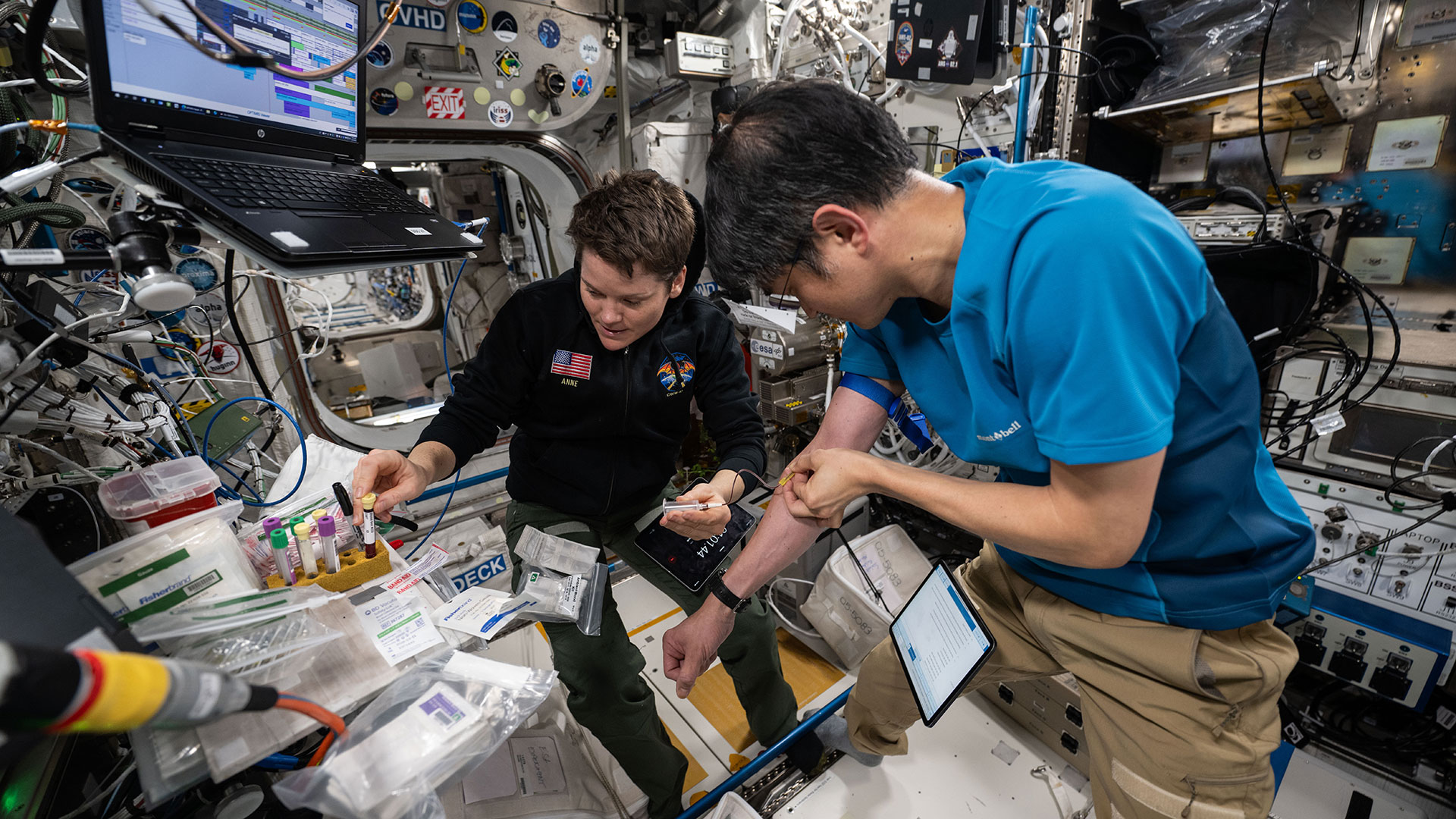Plush polar bear with penguin art floats as Fram2 zero-g indicator in polar orbit
Although it was only briefly seen during the live webcast of its launch, the Fram2 mission's zero-gravity indicator was instantly recognizable.
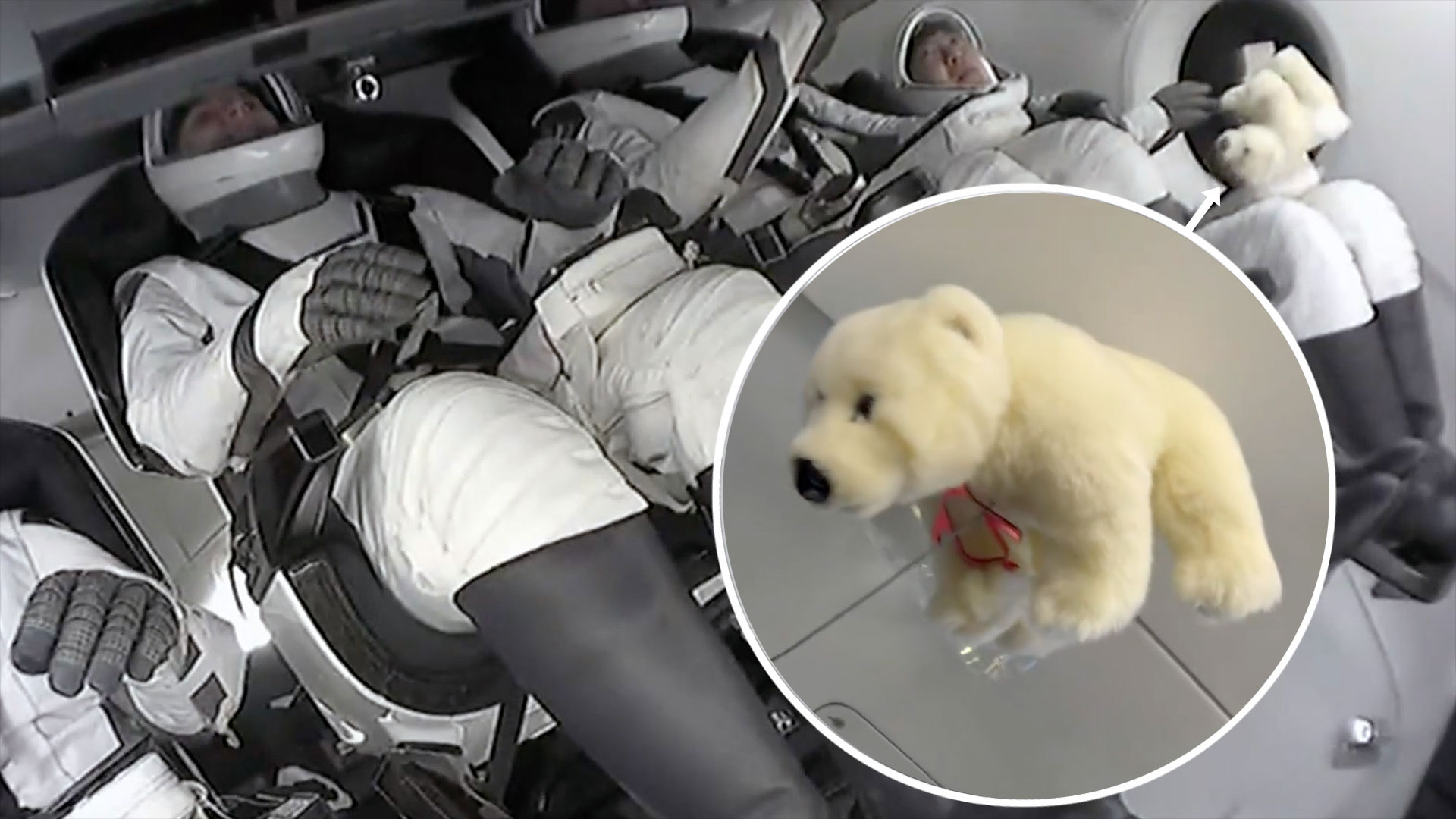
The first astronauts to enter a polar orbit around Earth chose the obvious animal to serve as their zero-g indicator — a plush white *polar* bear.
But given that the four-member Fram2 crew is not only flying over the North Pole, where the cuddly carnivore's real-life (and less cuddly) counterparts can be found, the doll also has an image of an emperor penguin embroidered on its chest, referencing the mission's passes over Antartica and the South Pole as well.
"Fram2's zero-g indicator is symbolic of the beautiful polar regions over which the crew will orbit," a spokesperson for the mission told collectSPACE.com after the toy was revealed — but not identified — on board SpaceX's Crew Dragon "Resilience" spacecraft after its launch on Monday night (March 31). "Combined, these two majestic animals represent the crew's hope for unity among all species on planet Earth, and beyond."
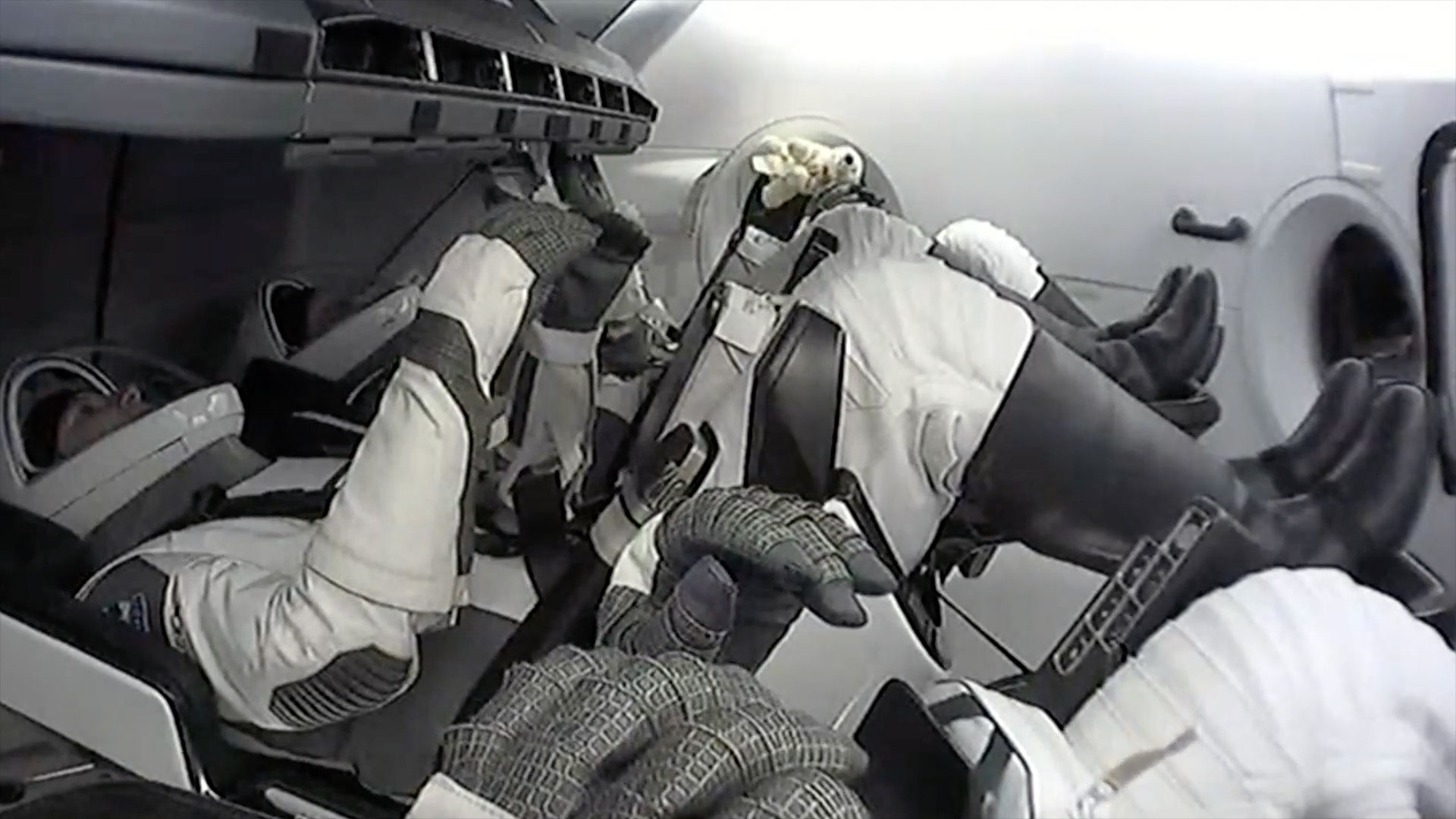
The Fram2 mission's zero-g indicator was sent floating at the end of a tether by mission commander Chun Wang, a Chinese-born cryptocurrency investor who underwrote the history-making flight.
"This is our zero-g indicator. His name is Tyler," said Jannicke Mikkelsen, Fram2's vehicle commander, the first professional cinematographer and first Norwegian woman to fly into space, in a later video update.
Related: Watch chilling 1st views of Earth's poles seen by SpaceX Fram2 astronauts (video)
Wang's and Mikkelsen's crewmates are pilot Rabea Rogge, a robotics expert focused on Arctic research and Germany's first woman in space; and mission specialist and medical officer Eric Philips, an Australian professional adventurer who has completed multiple ski expeditions to both of Earth's poles.
Traditionally, the zero-g indicator is the crew's first visual signal that they have entered the weightless environment of outer space. Modeled after Soviet-era cosmonaut Yuri Gagarin's choice to bring a small doll with him on the world's first human spaceflight in 1961, today, both career and commercial astronauts have flown the floating toys as selected by themselves, their children or to signal their support for causes or messages that they champion.
Get the Space.com Newsletter
Breaking space news, the latest updates on rocket launches, skywatching events and more!
Fram2's polar bear is the not the first zero-g indicator of its "species" to launch into space. At least two other polar bears have flown. Cosmonaut Yuri Lonchakov carried a small plush polar bear that was a gift from his son on both of his flights to the International Space Station, Soyuz TMA-1 in 2002 and Soyuz TMA-13 in 2008.
Another polar bear, one of the three mascots for the Sochi 2014 Winter Olympics, then flew as the zero-g indicator for Roscosmos cosmonaut Mikhail Tyurin, NASA astronaut Rick Mastracchio and JAXA (Japan Aerospace Exploration Agency) astronaut Koichi Wakata on board Russia's Soyuz TMA-11M spacecraft in 2013.
SpaceX's Crew-2 astronauts Shane Kimbrough and Megan McArthur of NASA, Akihiko Hoshide of JAXA and Thomas Pesquet with ESA (European Space Agency) chose as their zero-g indicator "GuinGuin," a fluffy penguin made by the London-based doll maker Jellycat, in 2021.
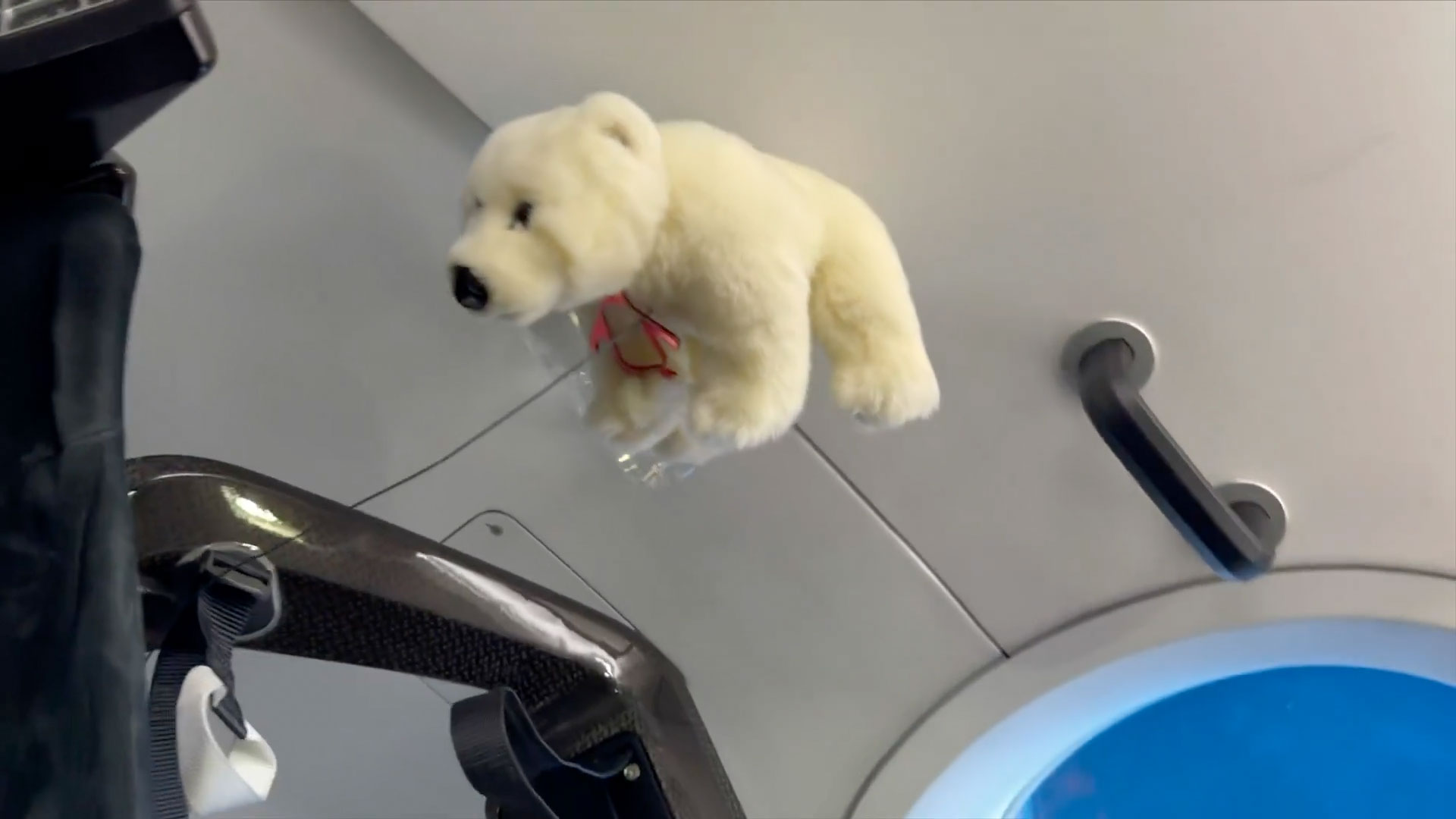
The Fram2 polar bear with its penguin embroidery will fly with the mission's four astronauts as they span the distance between the North and South poles every 46 minutes. After spending about three days exploring Earth from a polar orbit and flying over Earth's polar regions for the first time in human history, the astronauts (and zero-g indicator) will return home to a planned splashdown off the coast of southern California.
Follow collectSPACE.com on Facebook and on X at @collectSPACE. Copyright 2025 collectSPACE.com. All rights reserved.
Join our Space Forums to keep talking space on the latest missions, night sky and more! And if you have a news tip, correction or comment, let us know at: community@space.com.
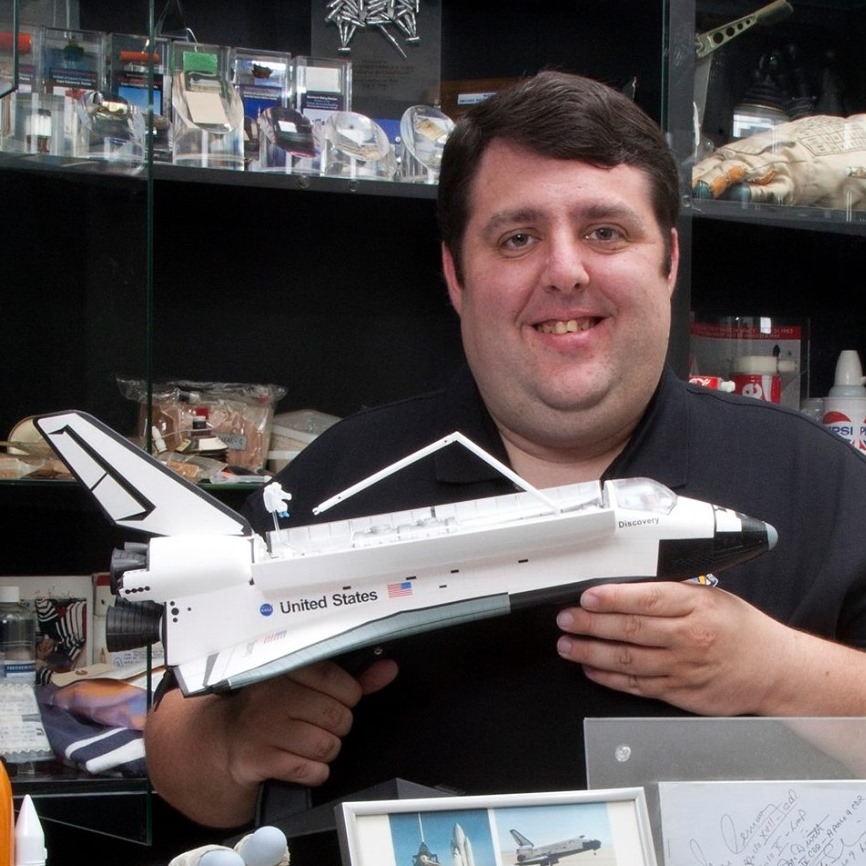
Robert Pearlman is a space historian, journalist and the founder and editor of collectSPACE.com, a daily news publication and community devoted to space history with a particular focus on how and where space exploration intersects with pop culture. Pearlman is also a contributing writer for Space.com and co-author of "Space Stations: The Art, Science, and Reality of Working in Space” published by Smithsonian Books in 2018.In 2009, he was inducted into the U.S. Space Camp Hall of Fame in Huntsville, Alabama. In 2021, he was honored by the American Astronautical Society with the Ordway Award for Sustained Excellence in Spaceflight History. In 2023, the National Space Club Florida Committee recognized Pearlman with the Kolcum News and Communications Award for excellence in telling the space story along the Space Coast and throughout the world.
You must confirm your public display name before commenting
Please logout and then login again, you will then be prompted to enter your display name.

